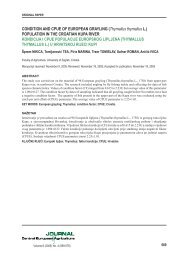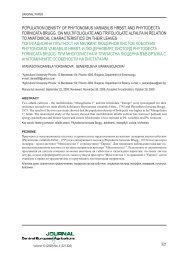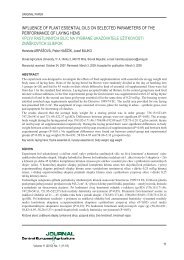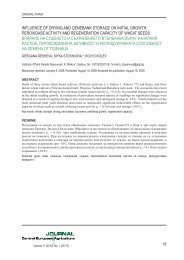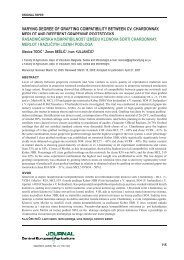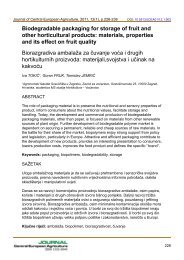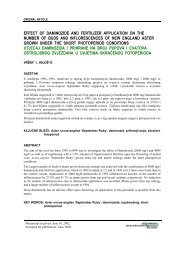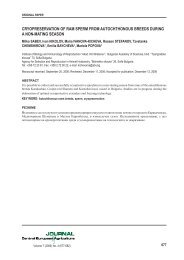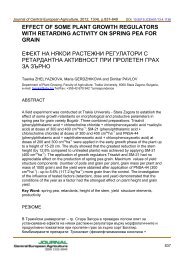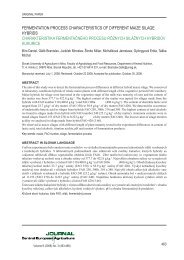lymantria monacha l. species monitoring with the aid of sexual ...
lymantria monacha l. species monitoring with the aid of sexual ...
lymantria monacha l. species monitoring with the aid of sexual ...
You also want an ePaper? Increase the reach of your titles
YUMPU automatically turns print PDFs into web optimized ePapers that Google loves.
OLTEAN I., PORCA, M. M., HORIA, B., BODIS, I.<br />
DETAILED ABSTRACT<br />
The case in which <strong>the</strong> environment conditions are favourable, <strong>the</strong> organisms noxious strongly multiply, <strong>the</strong><br />
so-called “mass multiplication”, causing important damages to forests. The occurrence <strong>of</strong> <strong>the</strong> attacks and<br />
forests sickening presumes a mass multiplication <strong>of</strong> noxious organisms. An extremely dangerous pest<br />
especially for <strong>the</strong> resinous <strong>species</strong> (spruce fir, pine tree, fir tree, larice, duglas) which can also attack leafy<br />
trees is Lymantria <strong>monacha</strong>. The larva <strong>of</strong> this pest attacks as <strong>of</strong> <strong>the</strong> beginning <strong>of</strong> spring. In <strong>the</strong> beginning <strong>the</strong>y<br />
attack <strong>the</strong> barely open buds which <strong>the</strong>y gnaw, <strong>the</strong>n <strong>the</strong> needles are partially or totally eaten. The <strong>species</strong> has a<br />
great multiplication capacity, <strong>of</strong>ten determining trees drying as it produces an exfoliation <strong>of</strong> up to 60 %.<br />
Partial exfoliation lead to trees weakening thus making way for <strong>the</strong> installation <strong>of</strong> secondary pests. In order to<br />
monitor <strong>the</strong> population <strong>of</strong> this Lymantria <strong>monacha</strong> pest, traps were installed during <strong>the</strong> 2001 – 2002 period,<br />
<strong>with</strong> <strong>the</strong> <strong>sexual</strong> attractant ATRALYMON. In all <strong>the</strong> 20 cantons <strong>the</strong> reading <strong>of</strong> <strong>the</strong> traps was done between<br />
July 1- September 30. In 2001, 473 traps were installed as compared to 2002 when 509 traps were open.<br />
246<br />
Journal <strong>of</strong> Central European Agriculture (online), Volume 4 (2003) No3



